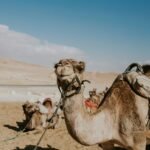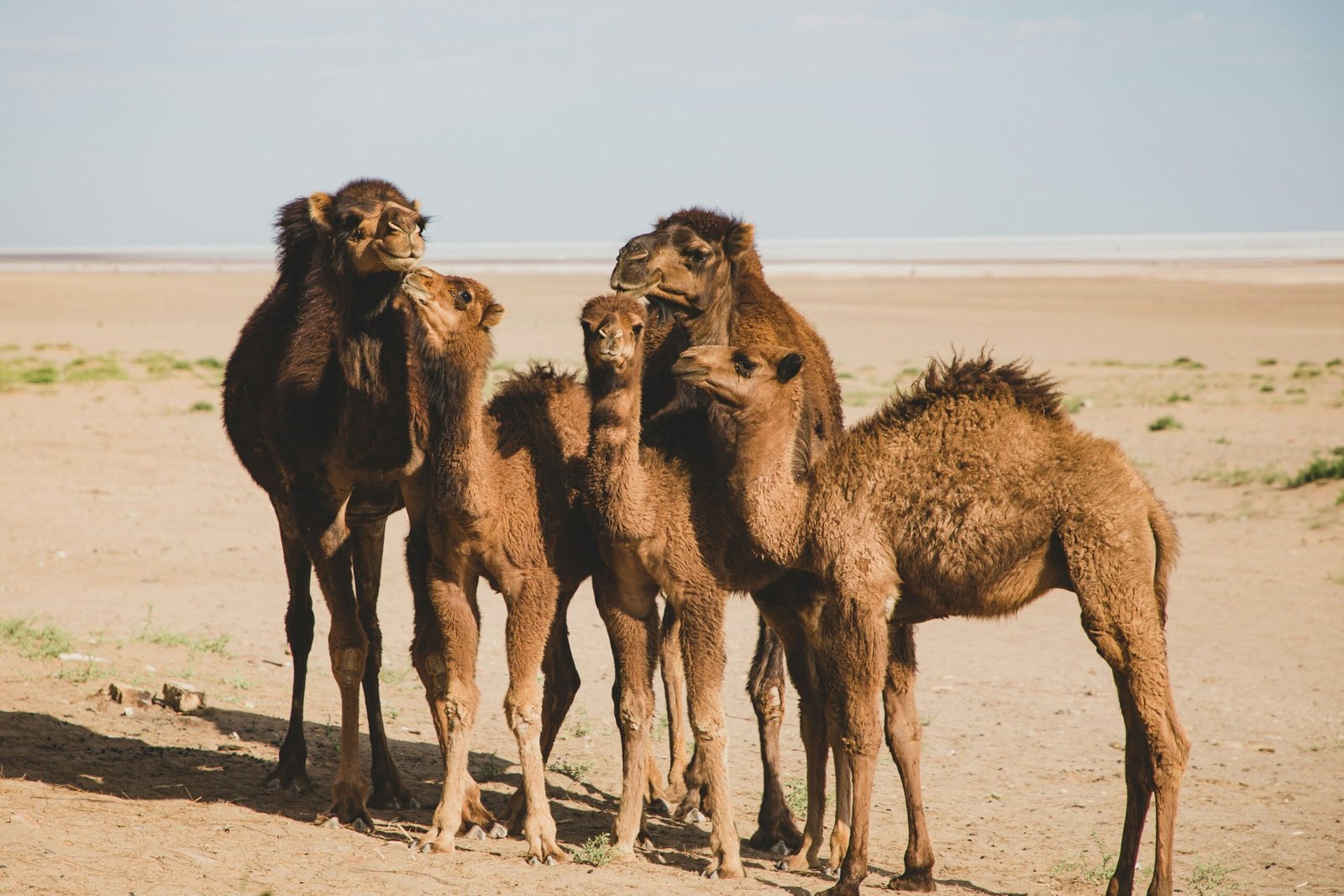Camels are well-known for their remarkable ability to survive in the harsh and arid conditions of the desert. Their unique diet and drinking habits contribute significantly to their resilience. In this article, we will explore in detail what camels eat and drink to sustain themselves in the desert environment.
Diet of Camels in the Desert
Camels are herbivorous creatures that have evolved to consume a wide variety of plants and vegetation available in the desert. Their diet consists of several key components:
- Thorny bushes and shrubs: Camels have a tough and resilient mouth lining that allows them to consume thorny plants such as acacia, thistles, and tamarisk. The sharp thorns do not cause any harm to the camels’ mouths. This unique ability enables camels to access vegetation that most other animals would avoid.
- Dry grasses and desert plants: In the arid desert regions, camels feed on dry grasses and various desert plants, including saltbush, desert thorn, and desert grasses. These plants have adapted to survive in extreme heat and provide essential nutrients to camels. Despite their dry nature, these plants offer sustenance to camels in the harsh desert environment.
- Date palms and palm leaves: In certain desert regions where date palms grow, camels consume their leaves as well as the ripe dates. This provides them with a good source of carbohydrates and sugars. Date palms serve as a valuable food source for camels, especially in areas where other vegetation is scarce.
- Cacti and succulents: Camels are capable of eating cacti and other succulent plants found in the desert. These plants are high in water content, which helps camels stay hydrated in the harsh desert conditions. The ability to consume water-rich plants is crucial for camels’ survival in the arid desert.
- Salt deposits: Camels also have a unique ability to lick salt deposits found in the desert. This behavior helps them replenish essential minerals in their bodies. Salt deposits serve as a valuable source of nutrients for camels, compensating for the lack of minerals in their diet.
Camels’ diverse diet allows them to adapt to the scarcity of vegetation in the desert and obtain the necessary nutrients to survive.
Drinking Habits of Camels in the Desert
Water is a scarce resource in the desert, and camels have evolved exceptional adaptations to survive with limited access to it. Their remarkable drinking habits include:
- Capacity to store water: Camels have the ability to drink and store a large amount of water in their stomachs. Their stomachs have a unique lining that can expand to accommodate around 30 gallons (113 liters) of water. This water storage capacity enables camels to survive for extended periods without access to water sources.
- Conserving body water: Camels have a lower rate of water loss compared to other animals. Their bodies can tolerate losing up to 25% of their body weight in water, while other mammals would not survive such dehydration. This adaptation allows camels to conserve water efficiently and thrive in the desert environment.
- Adaptable metabolism: Camels have a unique metabolic process that allows them to survive for long periods without water. Their bodies can tolerate high levels of dehydration without adverse effects. This adaptation helps camels endure the scarcity of water in the desert and maintain their overall health.
- Efficient use of water: Camels are capable of extracting a significant amount of moisture from the vegetation they consume. This ability aids in reducing their dependence on external water sources. By efficiently utilizing the water content present in the plants they eat, camels can sustain themselves in the desert environment.
Camels’ remarkable drinking habits and water conservation strategies enable them to survive in the desert with limited access to water.
Adaptations to the Desert Environment
Camels have evolved various physical and behavioral adaptations that allow them to thrive in the challenging desert environment. These adaptations enable them to survive extreme temperatures, navigate through sand dunes, and find food and water sources:
- Hump for fat storage: The hump on a camel’s back is not filled with water but with fatty tissue, serving as a reservoir of energy. This fat can be broken down to provide both energy and water when food and water sources are scarce. The hump plays a crucial role in sustaining camels during long periods without sufficient nourishment.
- Large, padded feet: Camels have wide, tough, and padded feet that help distribute their weight over a larger surface area. This adaptation allows them to walk on sand without sinking and also protects them from the intense heat. Their feet are well-suited for traversing the desert terrain, ensuring stability and minimizing discomfort.
- Long eyelashes and closable nostrils: Camels possess long, thick eyelashes that protect their eyes from sand and dust. They also have the ability to close their nostrils tightly, preventing sand particles from entering their respiratory system. These adaptations prevent potential harm caused by the desert’s harsh conditions, ensuring camels’ overall well-being.
- Ability to tolerate temperature extremes: Camels can withstand extreme temperature fluctuations, from freezing nights to scorching daytime heat. Their thick fur coat provides insulation, while their ability to regulate their body temperature helps them survive in such conditions. These adaptations enable camels to thrive in the desert’s challenging climate.
In conclusion, camels possess a remarkable ability to adapt to the desert environment by consuming a variety of vegetation and conserving water effectively. Their unique diet and drinking habits, along with physical and behavioral adaptations, enable them to thrive in the harsh and arid conditions of the desert.
FAQ
1. What do camels eat in the desert?
Camels in the desert eat thorny bushes and shrubs, dry grasses and desert plants, date palms and palm leaves, cacti and succulents, and salt deposits.
2. How do camels stay hydrated in the desert?
Camels have the ability to store water in their stomachs, conserve body water by tolerating dehydration, have an adaptable metabolism, and efficiently extract moisture from the vegetation they consume.
3. What adaptations do camels have for surviving in the desert?
Camels have a hump for fat storage, large padded feet, long eyelashes and closable nostrils for protection against sand and dust, and the ability to tolerate extreme temperature fluctuations.
4. How do camels navigate through the desert environment?
Camels navigate through the desert environment by walking on sand with their wide, tough, and padded feet, using their long eyelashes and closable nostrils to protect themselves from sand and dust, and by withstanding extreme temperature fluctuations with their thick fur coat and ability to regulate body temperature.










